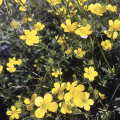Fish Kills
Fish Kills
Unexpected Fish Kills
Occasionally, a fish kill occurs in farm ponds because of water quality problems, infectious disease, swarming fire ants (in the spring), or misused agricultural chemicals (pesticides). In some cases, the losses may be enough to affect the balance of the fish population. Get professional help to evaluate the fish population balance after a fish kill. In many cases, a phone call will provide enough information.
Oxygen Depletions and Pond Turnovers
By far the most frequent cause of fish kills in farm ponds is low oxygen. Low oxygen can be the result of two separate phenomena in ponds. The first is simple oxygen depletion, which usually occurs July through September in the time of highest water temperature. Die-offs caused by low dissolved oxygen levels result from natural biological processes, and preventive measures are rarely efficient except for running an expensive aerator every night.
Following are factors that can contribute to low oxygen levels:
- Dense plankton blooms or dense stands of pond weeds.
- Several days of cloudy weather that reduce plant oxygen production.
- High temperatures, which decrease the solubility of oxygen in water and increase oxygen consumption by plants and animals.
- Sudden die-off of plants or algae, especially associated with herbicide use.
- Unusual weather patterns, such as storm fronts and heavy, cold rain.
- Overstocking fish, excessive fertilization, or high feeding rates.
- Input of organic matter, such as hay, straw, or cottonseed meal for turbidity or algae control, and materials such as animal manure or sewage.
Another condition, often called “pond turnover,” can occur after heavy, cold rains in late spring to early fall when temperatures drop suddenly. During calm, hot days, the pond develops temperature layers called “stratification.” The layer of water at the surface is exposed to the sun and warms quickly. This warm layer weighs less than the cool water below, so these layers do not mix. Surface layers contain high levels of oxygen produced by the phytoplankton. The cooler bottom layers are cut off from the surface layers and their sources of oxygen, so oxygen levels drop over time because of normal biological processes. In fact, these deep waters can actually develop an “oxygen demand,” which is like having negative oxygen levels.
When a heavy, cold rain enters the pond, or when there are sustained high winds, it mixes the two layers of water. When this occurs, oxygen levels throughout the pond may drop too low for fish to survive.
A severe mixing event can kill nearly every fish larger than an inch or two in one night. It is not uncommon to find large dead fish on dry land in the watershed above the pond following a turnover. These fish swam up the incoming rain waters seeking oxygen. Adult fish die first, and intermediate-sized fish follow if the oxygen levels are too low or if low oxygen conditions continue for many days.
Usually, by the time you recognize there is an oxygen problem, it is too late to save your fish. But an early symptom of a low-dissolved oxygen level is fish at the surface of the pond at sunrise. Fish appear to be “gasping for air.” If you discover the low oxygen event early enough, you may be able to save some fish by using emergency aeration. A powerhouse-type aerator works great, but most people don’t have access to aquaculture equipment. You can back a boat with an outboard motor halfway into the pond and tilt the motor at a 45-degree angle to the water surface. Run the motor at high speed to move a “rooster tail” of water into the air and across the pond. Any technique that mixes water and air can help provide an oxygen refuge for fish.
Following a severe fish kill, some fingerling fish usually survive, but overcrowding bream tends to follow. After a severe fish kill, contact a fisheries biologist to assess the status of your fish population.
pH and Mineral Problems
Poor water chemistry is the second-leading cause of fish death in Mississippi ponds. Fish in acidic water with low alkalinity and hardness are more likely to get sick, especially during times of stress, such as spawning season or periods of rapid temperature change, particularly late-winter and early-spring. A few fish, usually of different species (although catfish are especially sensitive), die every day, and many may have sores or lesions. If this is the case, have your pond water alkalinity measured to determine if agricultural limestone is needed. Liming increases the dissolved minerals in the water, which reduces stress on the fish.
Infectious Diseases and Parasites
Bream and bass generally do not have significant problems with infectious diseases in well-balanced ponds, although you may see an occasional sore on individual fish during spawning season or after an injury. This is normal, and these external sores do not pose any health hazard to humans.
The one known exception is largemouth bass virus (LMBV), which is not common in Mississippi ponds. This virus becomes evident during the hot summer, when largemouth bass are seen sick or dead on the surface and around the pond. A few bass die every day during warm weather, and larger fish seem to be more affected. When water temperatures cool in September/October, no more fish die from the virus, but the virus persists in the pond. The best way to avoid LMBV and other health problems is to follow stocking recommendations and to avoid stocking fish from other natural systems.
Occasionally, bass and bream have small white or yellowish grubs imbedded in the flesh. These grubs, although unpleasant to look at, pose no threat to humans. You can trim away the affected area, and the rest of the fish is safe to eat if properly cooked.
Infectious diseases and parasites of channel catfish are common problems in catfish ponds. Overstocking, inconsistent feeding, and poor water quality contribute to this in recreational ponds. Disease and parasite problems of catfish rarely occur when you use low stocking densities (100 to 150 per acre). Stress from handling may cause die-offs of fish within 2 weeks of stocking new or established ponds. If you choose to stock catfish at rates higher than recommended (100 to 150 per acre), plan to cope with problems that may occur.
Fire Ants
Fire ants often wash into ponds or fly in during breeding swarms, and small and intermediate-sized bream may die from eating these insects. Bass are rarely affected. This generally does not hurt the population balance.
Determining Factors in Fish Kills
When a fish kill occurs, be ready to tell a fisheries professional the following information:
- Species and sizes that died.
- Number of fish lost since the die-off started.
- Approximate number of fish lost each day.
- Date and time of day the losses started.
- Whether fish were seen “gasping” at the surface of the water.
- Size of pond (surface acres).
- Average pond depth.
- Number of fish stocked in the pond.
- Condition and color of the bloom or water before and after fish kill:
- Light – You can see at least 18 inches deep, and the pond has no accumulation of algae in the corners or on the downwind side.
- Moderate – You can see 12 to 15 inches deep, and the pond may have some algae in the corners or on the downwind side.
- Heavy – You can see no more than 12 inches deep.
Publications
News
Whether you have a large lawn, field, or pasture, you’ve probably had to deal with pesky weeds.
BILOXI, Miss. -- The Southeast has some of the most commercially and recreationally valuable fisheries in the United States.
Success Stories
Billy Mitchell spent his childhood summers in the water and has lived at Pelahatchie Bay for more than three decades, so his dedication to protecting water resources now almost makes too much sense.







